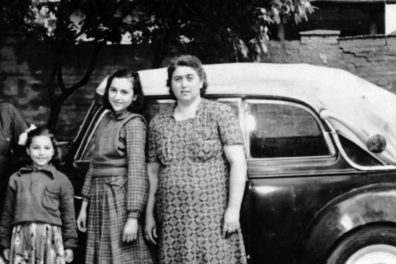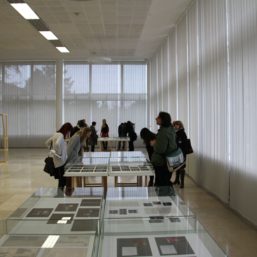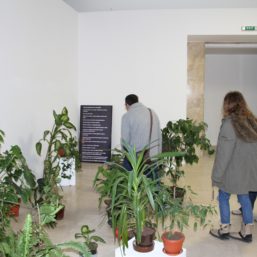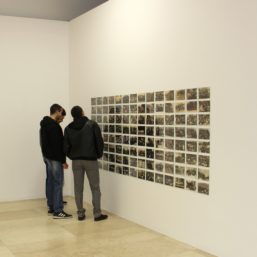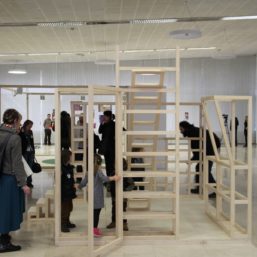Fiery Greetings
28.02-23.04.2015
The exhibition Fiery Greetings: A representative portrayal of childhood in socialist Yugoslavia will be opened on Saturday, February 28th, 1 pm at the Museum of Yugoslav History. It is a project by Ana Adamović’s Kiosk – Platform for Contemporary Art, carried out in collaboration with the Museum of Yugoslav History with the support of the Balkan Trust for Democracy, forumZFD, the Ministry of Culture and Information of the Republic of Serbia and the Austrian Cultural Forum.
The exhibition will feature works by artists from the former Yugoslavia: Dušica Dražić, Dejan Kaludjerović, Saša Karalić, Irena Lagator, Mladen Miljanović, Renata Poljak, Dubravka Ugrešić, ŠKART Art Group and Ana Adamović.
A debate with the artists will be held after the opening at 2 pm, while two additional panel discussions with the participants from the region,continuing the debate are scheduled for Thursday, March 12th at 6 pm and Tuesday March 24th at 6 pm.
The exhibition Fiery Greetings offers a new interpretation of socialist Yugoslavia – its structure, character and legacy through investigating a comprehensive image of childhood. Through research in the official archives and by presenting archive material through the prism of interventions performed by artists of ex-Yugoslav descent and bringing it into an active dialogue with works of art exploring on the topic of the former Yugoslavia in a wider sense, the project also re-examines both the possibility of collective memory of a country that no longer exists and the status of the archives of such a country in the newly formed states.
The artists, invited to take part in the creation of the exhibition have been focusing on the former Yugoslavia and the topic of collective memory for a number of years now. The works of art, most of which will be shown for the first time at the exhibition Fiery Greetings actively communicate with the museum collection, allowing a new reading and interpretation of the archive material.
The rich archive of the Museum of Yugoslav History has provided a starting point for artistic research and the project itself. It consists of more than 260 albums of photographs, given to President Tito as gifts from 1945 onwards by schools, Pioneer organizations and other children’s institutions through out the former country. This material, in many ways, shows how the people in Yugoslavia wanted to be presented to the country’s undisputed leader and ruler and bears witness to incorporating the basic nation-building principles into the everyday life of children and young people – the true socialist bearers of the future.
The authors of the exhibition decided to use these fascinating documents of an era as a starting point for examining not only the construction of childhood in socialism, but also the very principles on which the country was built, as well as its history and disintegration.
The exhibition will be open from February 28th until April 19th, 2015.
About the artists:
Dušica Dražić, artist was born in Belgrade. She explores the ambivalent relationship between citizens and the city, the ways in which they support one another and also their destructiveness. Moreover, the artist searches for spaces of irregularity, difference, flexibility, building an archive of traces indicating that the cultural space is in a state of constant redefinition and transformation and the ways in which these processes take place.
In addition to her artistic practice,Dušica Dražić has also initiated and curated various projects and exhibitions.
(www.dusicadrazic.wordpress.com)
Dejan Kaludjerović was born in Belgrade. He was granted honourable Austrian citizenship for his achievements in visual arts and is currently a PhD candidate at the Academy of Fine Arts in Vienna. He earned his MA degree in visual arts from the Academy of Fine Arts in Belgrade, in 2004.
Since the beginning of his career in Belgrade, in the mid-1990s, Dejan Kaludjerović has been exploring the conjunction between consumerism and childhood, analysing the ways of identity formation and stability of representational forms. In his paintings, drawings, objects, videos and installations, he mostly employs the processes of recycling, copying and reconstruction, thus creating patterns that simulate mechanical reproduction, and criticize the homogenization typical of the popular culture.
Saša Karalić was born in Ivanjska, Bosnia and Herzegovina. He studied Yugoslav literature at the Faculty of Philosophy in Novi Sad. In 1992, he moved to Amsterdam where he graduated from the Gerrit Rietveld Academy, Audio-Visual Department, where he currently teaches multimedia art. He is the founder and director of the programme Art in Context – Integrated Art and Theory.
Karalić mostly focuses on video and photography and his work is based on organized public events and collective activities. His work explores collective-related issues and the effects that collectively constructed interpretations have on the social context and the creation of the public discourse. In addition to artistic practice, Saša Karalić also does curatorial work.
Irena Lagator Pejović was born in Cetinje. Her works investigate issues related to the relationship between social, public and personal space, perception and social responsibility. By recreating social phenomena, the artist develops critical and poetic questions that can be incorporated into her concept of the unlimited responsibility society.By inviting the audience to interact with her work, her installations, videos or photographs focus on art as a social strategy, inclusivity of cultures, the perception and understanding of reality, individual and collective responsibility and identity of the society, directing the gaze, thoughts and emotions of the visitors to social issues of universal value.
Mladen Miljanović was born in Zenica in 1981. He completed secondary school in Doboj and subsequently attended a course for reserve officers, earning the rank of sergeant. As a sergeant he trained 30 privates. Having completed his military term he enrolled at the Academy of Arts (Department of Painting) in Banjaluka from where he graduated and earned his MA degree and where he is currently teaching.
Renata Poljak is a visual artist based in Split. She makes use of different media, creating photos, videos, films and installations. Her works were featured in numerous exhibitions, biennials and film festivals, winning awards at the Black Box festival in Berlin (2006) among others and the TNT prize awarded by the Museum of Contemporary Art in Zagreb (2012).
Dubravka Ugrešić is one of the most distinctive novelists in Europe today. Her books have been translated into over twenty languages. She has taught at a number of American and European universities, among which Harvard, UCLA, and Free University in Berlin. She is the winner of several major literary prizes. Having earned her degrees in Comparative and Russian Literature, she worked for many years at the University of Zagreb Institute for Theory of Literature, while publishing both literary works and essays. In 1991, when war broke out in the former Yugoslavia, she took a firm anti-war stance, sharply criticising retrograde Croatian and Serbian nationalism, the stupidity and criminality of war, becoming a favourite target of nationalist journalists, politicians, and fellow writers. Subjected to prolonged public ostracization and persistent media harassment, she left Croatia in 1993. Dubravka Ugrešić lives in Amsterdam.
Škart is an art group founded in 1990 in an abandoned graphic studio at the Faculty of Architecture in Belgrade. It has survived as a collective, bringing together numerous collaborators, exploring and cross-examining borderline forms of poetry, architecture, graphic design, publishing, performance, music, theatre, alternative education and social activism by creating constant clashes between these means of expression.
Škart has held a series of lectures and activities, showcased its creations and organized concerts and workshops throughout Europe, the US and Asia. In 2010, the group presented the Seesaw Play-Grow Imbalance Range project at the Venice Biennial of Architecture.
Ana Adamović’s photographic and video work focuses on the topics of identity and memory, both personal and collective.
She graduated from the University of Belgrade, Faculty pf Philology, Department of World Literature and studied photography at the Art Institute of Boston. She is a PhD in Practice candidate at the Academy of Fine Arts in Vienna and the founder of the Belgrade-based organization Kiosk – Platform for Contemporary Art.
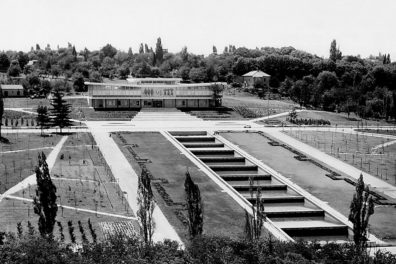
The Origins: The Background for Understanding the Museum of Yugoslavia
Creation of a European type of museum was affected by a number of practices and concepts of collecting, storing and usage of items.
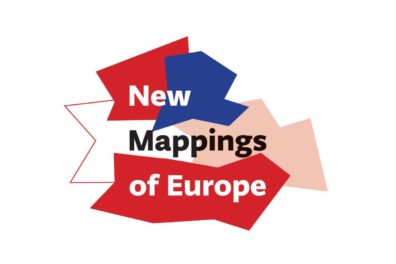
New Mappings of Europe
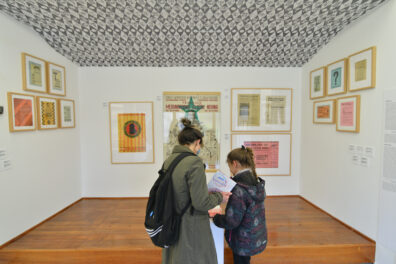
Museum Laboratory
Starting from the Museum collection as the main source for researching social phenomena and historical moments important for understanding the experience of life in Yugoslavia, the exhibition examines the Yugoslav heritage and the institution of the Museum
